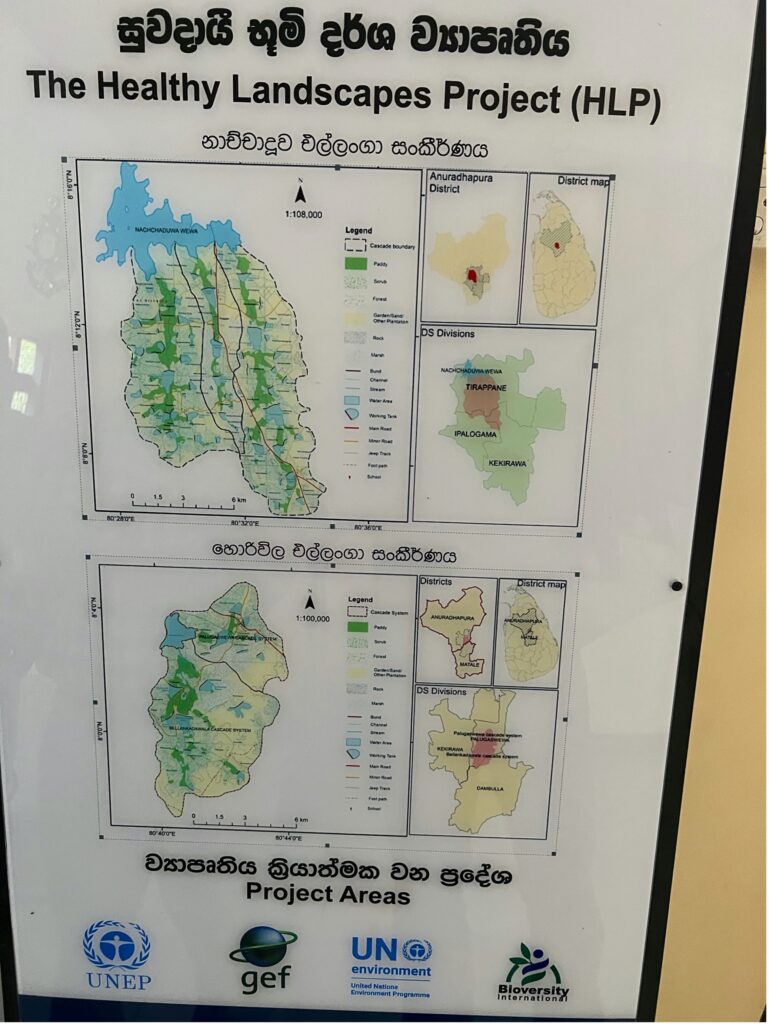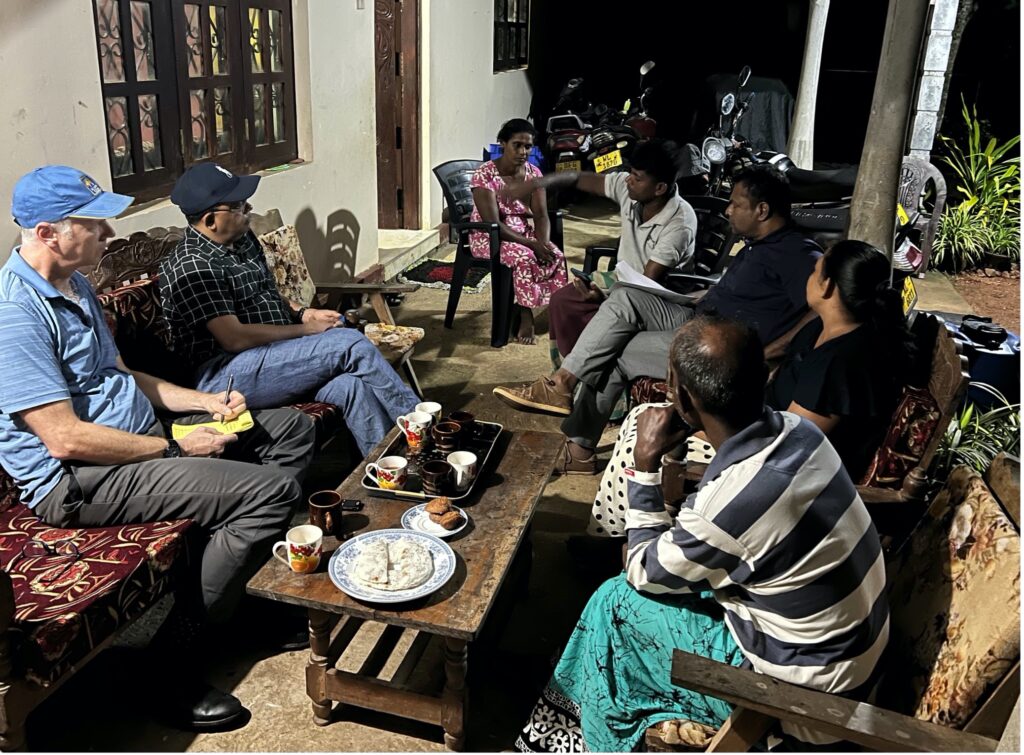Location: Sri Lanka
Timespan: 2017-present
Partners: The Ministry of Environment, Forest Department, Provincial Departments of Agriculture and Education, District Secretariat, District Agrarian Services, and District Ayurveda Services Department, Bioversity International, UNEP, SACEP, HLP, local schools, and the local villagers.
Relevant SDGs: 6, 12, 13 & 15



Background:
The Healthy Landscape Project (HLP) is dedicated to the restoration of tank cascade systems in Sri Lanka, with a focus on addressing the human and ecosystem impacts of climate change and the degradation of these systems over time. Funded by the Global Environment Facility (GEF), the project orchestrates multifaceted restoration efforts to achieve observable environmental and economic impacts.
Benefits of Tank Cascade Restoration:
The restoration initiatives, including bund restoration, channel and gate rehabilitation, tree planting, and invasive plant removal, have resulted in significant environmental and economic benefits in the region, as reported by HLP beneficiaries. Farmer organizations express strong support for tank cascade restoration, emphasizing its importance for ongoing maintenance and prospects for future phase 2 restoration work. Stated benefits of tank cascade restoration include improved groundwater recharge, enhanced surface water quality, the return of wildlife, increased honey production, potential revival of fishing as a livelihood, growth in dairy production, expansion of eco-tourism opportunities, and overall improvement in the health of flora and fauna in the region. The construction of elephant fencing and restoration of the Thumbikulama tank have effectively reduced elephant conflicts, diverting elephants away from paddy and vegetable farms. Villagers’ health and well-being show improvement due to tank restoration, acknowledged by district health officers and the district secretariat, attributing the positive changes to improved morale, increased economic prosperity, and healthier water supplies.
Benefits of HLP Programs:
HLP-funded programs provide villagers with increased opportunities in seed production and food entrepreneurship, resulting in significant success stories. Support for a major teacher training initiative has trained science teachers in cascade science, project-based learning, and curriculum development, with broader implications for spreading such curriculum across schools in the province. New nutrition programs inspire villagers to adopt healthier practices, beginning at the pre-school levels. Representatives from Provincial Departments of Agriculture, Education, Ayurveda, and the Forest Department appreciate HLP funds for extending existing programs and services to impacted villages.
Benefits of HLP Knowledge Products:
Spearheaded by Rajarata University of Sri Lanka, impactful knowledge products have emerged, including short courses and source books on tank cascade science and maintenance, a network of tank cascade researchers, the first-known database on tank cascade data, literature, and related resources, and a comprehensive scholarly book on tank cascade science. These knowledge products serve as a pivotal foundation for fostering a community of practice around tank cascade science, restoration, and maintenance. They hold extensive implications for education, training, research, and policy concerning Sri Lanka’s village tank cascade systems.
Biosphere and SDGs
Many key informants drew links between tank restoration and climate change. Accounting to leaders from the Ministry of Environment and the Provincial Department of Agriculture, climate change has contributed to the increased frequency and severity of extreme events, including cycles of drought and floods, sometimes occurring within close proximity of one another. Extended droughts have depleted ground water supplies and limited water supplies for pump irrigation, leading to lower yields on crops. In addition, lower water tables in well have increased the hardness of the water supply, exposing villagers to heavy metals, and contributing to increased levels of chronic kidney disease (CKD). Flood events are also seen to be more frequent. Non-functioning or under-functioning tank cascades have traditionally provided flood mitigation services. Tank degradation in the Health Landscape Project (HLP) regions have been said to have increased flood hazards in the area.
The Healthy Landscape project uses ecological approaches to restore ancient village tank cascade systems (VTCS) with the goals of advancing agroecological land management, strengthening ecological health of humans and ecosystems, and create greater balance between social and ecological systems.
Key informants from the NGO and government agencies related to the environment and agriculture were able to nimbly reference how the HLP components relate to specific SDGs. Sri Lanka has taken the SDGs seriously, and has a number of projects underway associated with plans emanating from the country’s voluntary assessment.
In GOGREEN, we define the green SDGs as the following SDGs: SDG 6, SDG 7, SDG 11, SDG 12, SDG 13, SDG 14, SDG 15
This website uses strictly-necessary cookies. To read more about WordPress cookies, click here. Please click on the ‘Accept’ button to continue on to the GOGREEN Project site.